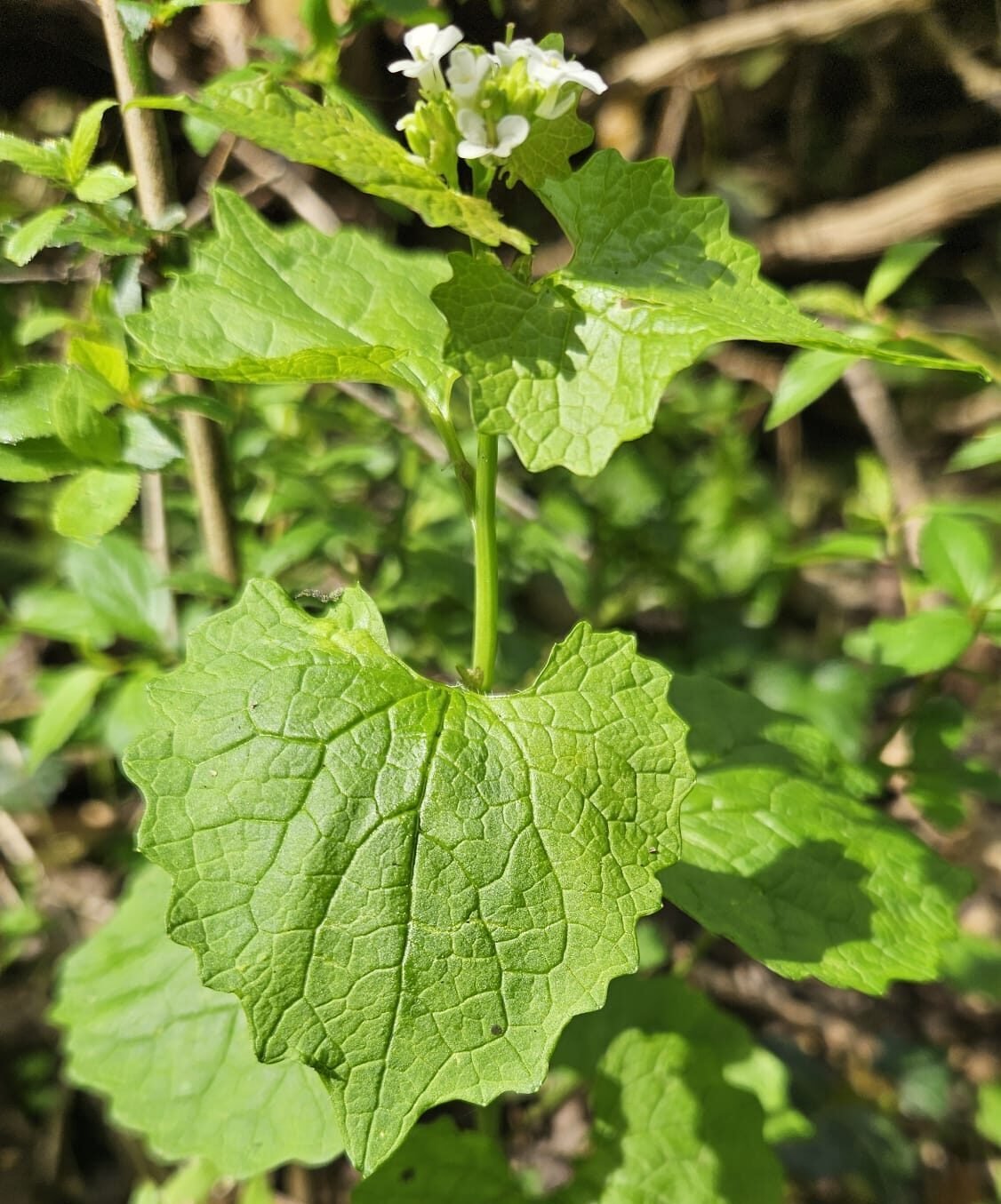
Garlic Mustard
(Alliaria petiolata)
Description and Distribution
Garlic mustard has heart-shaped stalked leaves growing alternatingly on an erect stalk. Its flowers measure 6mm across and have 4 petals.
A biennial plant, garlic mustard is native to the British Isles and can be found in most of Europe. They grow primarily in shaded areas, like roadsides and the margins of woods.
Garlic mustard grows in woodland, farmland and grassland habitats as well as in towns and gardens, and along hedgerows. The plants can be seen between September and April and their flowers appear in spring.


Ecological interactions
Several pollinators interact with garlic mustard flowers, including some butterflies.
Young garlic mustard leaves can be used in foods, such as salads or to add some garlic-like flavour to a dish.
Despite its name, Garlic mustard is not closely related to garlic (it is not a member of the Allium genus). It is, however, a member of the mustard family (Brassicaceae) and the ‘garlic’ part of its name is a result of its garlic-like aroma.
Uses
Young garlic mustard leaves can be used in foods, such as salads or to add some garlic-like flavour to a dish.
RELATED POSTS
View all


